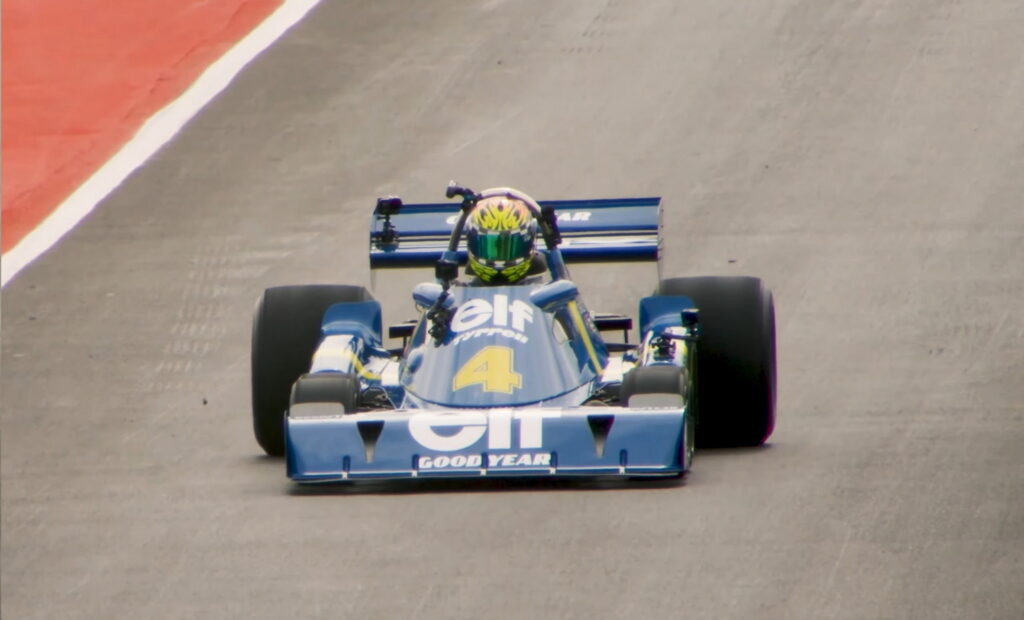Ben Collins built a career on being extremely good at driving as The Stig on BBC’s Top Gear. It’s no surprise, then, that people are willing to hand him (proverbial) keys to quite a few cars, including the infamous Tyrrell P34 Formula One car that competed in 1976 and 1977.
Arriving at a time when F1 cars kind of looked like they’d been designed by five-year-olds on a sugar high, anyway, the Tyrrell P34 took that design aesthetic to the next level by sticking another pair of wheels at the front, making it a six-wheeler.
Behind the baffling design was some really clever engineering, though. Built for a changing regulatory framework, all F1 cars at the time were forced to sport a narrower front wing than they had in previous seasons. That meant that aerodynamicists couldn’t deflect the air over the front wheels as effectively, leading more of it to hit the wheels and become “dirty.”
Read: Sebastian Vettel Takes E-Fuel-Powered F1 Car Around The Nurburgring

Intent on finding a way to tuck its wheels in behind the little wing, Tyrrell decided to lose the traditional front wheels and replace them with four smaller ones. Not only did that improve grip (they had a 60 percent larger contact patch than the front tires worn by other teams), it also meant cleaner airflow over the car, which the team claimed was worth about 7 mph (11 km/h) on the straights.
The result was a car that didn’t really look like anything else. So what is it like to drive today? Well, according to Collins, pretty fun, if a bit intense.
“That was the kind of drive that you wish would never end,” he says in a new video on his YouTube channel. “It’s not the kind of car that drives itself. You have to manhandle it to extract the performance. On the limit under braking to get the most of what the little and the large tires have to offer. An aggressive driving style to pitch those fat rear tires into a slip angle to generate more brute force.”
Collins admits that this was a dream car of his and, unfortunately, like a lot of dreams, there are some disappointments. For starters, it’s quite uncomfortable. With pedals that are hard to find and a roll cage near your shin to punish searching for them, he may wish he’d worn soccer shin guards under his racing suit. In addition, the rugged driving style means that it’s hard, albeit rewarding, to drive.
“It’s left me with a huge respect for the drivers who worked the wheel of these beasts for lap after lap across multiple seasons, because they really were on the limit and having to constantly think about the right way to drive the Tyrrell,” said Collins. “This [car] just screams its features at you because it’s so radically different to anything else.”




